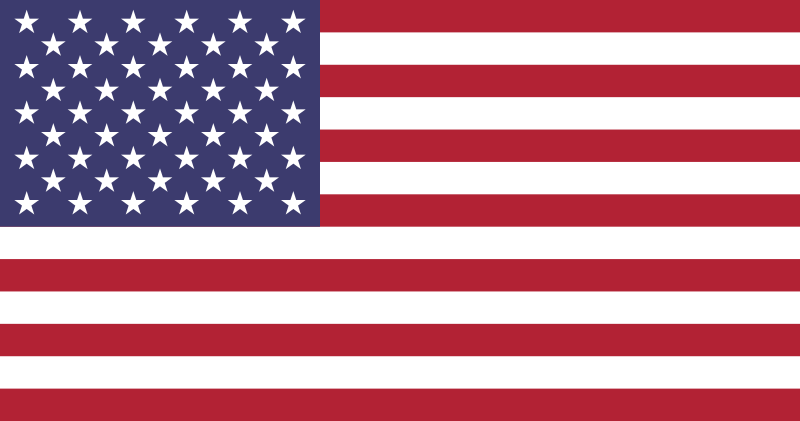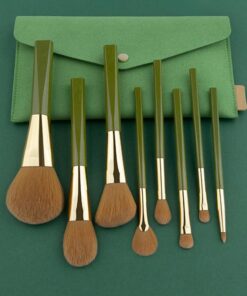Bags, Womens Shoulder Bags
Sustainable Shoulder Bags: Eco-Friendly Style Guide
Table of Contents
Introduction
In today’s fashion world, sustainability is no longer a niche topic, it’s a growing movement. Shoppers are asking how their choices affect the planet, and one accessory that’s gained attention is the sustainable shoulder bag. Unlike traditional handbags made with animal leather or mass-produced synthetics, eco-friendly shoulder bags are designed with environmental impact and ethical practices in mind.
This doesn’t mean every bag on the market is sustainable, far from it. But it does highlight a shift in awareness. From vegan leather shoulder bags crafted from plants, to recycled material bags made from plastic bottles or fishing nets, to fair trade bags that support artisans and workers, there’s a growing variety of options that connect fashion with values.
This guide takes a closer look at what makes a bag “sustainable,” the materials and methods behind it, and the brands experimenting with these ideas. Even if you’re not shopping for a certified sustainable product, understanding these trends can help you make choices that last longer, reduce waste, and align with what matters most to you.
Shoulder Bags Made from Recycled Materials
One of the clearest trends in sustainable fashion is the use of recycled textiles. Recycled material bags take waste that would normally pollute landfills or oceans and transform it into something new and functional. For shoulder bags, this often means fibers spun from plastic bottles, nylon nets, old fabrics, or even rubber, repurposed into durable designs.
Why Recycled Materials Are Popular
The fashion industry is under pressure to reduce its reliance on virgin resources. Polyester, nylon, and leather all have high environmental costs, from oil extraction to water-intensive tanning. By choosing eco-friendly shoulder bagsmade from recycled inputs, shoppers can help reduce demand for new raw materials. This has real benefits: studies show that producing rPET (recycled polyester from bottles) uses up to 59% less energy and generates fewer emissions compared to virgin polyester. According to the Textile Exchange, recycled polyester reduces greenhouse gas emissions by up to 32% compared with conventional polyester (Textile Exchange, 2021).
Common Sources of Recycled Materials
- Plastic Bottles → turned into rPET yarn, then woven into fabric linings and outer shells.
- Fishing Nets → recycled into ECONYL® nylon, a material prized for strength and longevity.
- Old Textiles → upcycled into patchwork designs or re-dyed for one-of-a-kind sustainable shoulder bags.
- Rubber and Tires → cut and repurposed for bases, straps, or trims, giving a unique industrial look.
These materials don’t just reduce waste; they also bring a story with them. Carrying recycled material bags allows shoppers to feel part of a wider movement that turns yesterday’s trash into today’s fashion.
The Broader Impact
When consumers choose recycled fabrics, the effects ripple outward. Every eco-friendly shoulder bag made from reclaimed bottles or nets represents fewer resources extracted, less landfill buildup, and lower greenhouse gas emissions. For many buyers, this visible connection to impact is part of the appeal, it turns a bag into more than just an accessory.
Style Meets Function
Importantly, sustainable shoulder bags made from recycled fibers aren’t only for eco-activists. Many designs today balance sustainability with everyday practicality: lightweight rPET fabrics that are water-resistant, ECONYL® nylon that holds up to heavy use, and blends that look as polished as traditional polyester or canvas. The fact that these bags can be stylish, affordable, and long-lasting is helping push the sustainable trend into the mainstream.
Vegan Leather Shoulder Bags
Leather has always been central to handbag design, but its environmental footprint has sparked debate. The farming of animals for hides, chemical-heavy tanning, and water use have made traditional leather a concern for conscious shoppers. In response, many brands are developing vegan leather shoulder bags that replicate the look and feel of leather without relying on animal products.
What Is Vegan Leather?
Vegan leather is a broad term covering materials that substitute for animal hides. Early versions were petroleum-based synthetics such as polyurethane (PU) or polyvinyl chloride (PVC). While these offered cruelty-free alternatives, they came with their own environmental downsides because they are plastic-heavy. More recently, however, designers are experimenting with eco-friendly shoulder bags made from plant-based sources that better reflect the goals of sustainable fashion.
Plant-Based Innovations
- Piñatex (Pineapple Leather): Made from the fibers of pineapple leaves, a byproduct of the food industry. The material was developed by Dr. Carmen Hijosa and is now widely recognized as a sustainable leather alternative in the fashion industry (Hijosa, 2016). Renewable, biodegradable, and increasingly popular in sustainable shoulder bags.
- Apple Leather: Created from apple skins and cores discarded by juice production. Strong, biodegradable, and surprisingly luxurious in finish.
- Cork Leather: Harvested from cork oak trees without damaging the tree itself, cork leather is renewable, lightweight, and naturally water-resistant.
- Mushroom Leather: Produced from mycelium (mushroom root systems), this emerging material offers a supple texture close to suede.
These innovations are driving demand for vegan leather shoulder bags, especially among consumers who want animal-free options without giving up on quality or style.
Why Shoppers Choose Vegan Leather Shoulder Bags
For many buyers, the appeal is twofold: ethics and innovation. Choosing a vegan leather shoulder bag avoids the animal welfare concerns tied to leather farming and reduces reliance on chemical-heavy tanning. Plant-based alternatives often use agricultural byproducts, meaning less waste overall. On top of that, they come in varied textures and colors, making them versatile fashion statements.
Durability is another draw. Modern vegan leathers are proving long-lasting, and when cared for properly, they can rival traditional leather. This reinforces the idea that eco-friendly shoulder bags don’t require compromise, they can be sustainable, functional, and stylish all at once.
Fair Trade and Ethically-Made Shoulder Bags
Sustainability isn’t only about materials, it also extends to how bags are produced and who makes them. A growing number of companies are exploring fair trade bags and ethically made designs to address social as well as environmental concerns. For many shoppers, knowing that artisans and factory workers are paid fairly and treated with dignity is just as important as the fabric a bag is made from.
What Fair Trade Means
Fair trade is a certification system that ensures better wages, safer conditions, and long-term community benefits. Research highlights that fair trade programs have improved income stability and working conditions for farmers and artisans in multiple countries (Dragusanu et al., 2014). When a label carries a Fair Trade Certified™ or World Fair Trade Organization (WFTO) mark, buyers know the product has met strict social and environmental standards. For eco-friendly shoulder bags, this often means not only sustainable sourcing but also transparent supply chains.
Why Ethical Manufacturing Matters
The fashion industry has long faced criticism over poor labor practices. Sweatshops, unsafe conditions, and low wages remain a reality in many parts of the world. Supporting fair trade bags helps counter these issues by creating demand for more transparent, equitable systems. Many ethical brands combine this with eco-conscious practices, reducing waste, using recycled material bags, and experimenting with organic or natural fibers.
Benefits for Shoppers and Communities
- Worker Empowerment, Fair trade ensures artisans and workers receive fair pay and safer conditions.
- Community Investment, Many certified companies reinvest profits in education, healthcare, and infrastructure.
- Environmental Gains, Ethical production often uses less water, fewer chemicals, or sustainable fabrics such as vegan leather shoulder bags made from plants.
- Consumer Confidence, Buyers can feel secure knowing their purchase of a sustainable shoulder bag aligns with both social justice and environmental care.
A Broader Shift in Fashion
Ethical and fair trade practices reflect a wider shift toward holistic sustainability. While only a fraction of the market carries fair trade certification, the awareness it creates is significant. It encourages mainstream brands to rethink how their products are made and gives shoppers options that reflect both style and values. For those exploring eco-friendly shoulder bags, fair trade labels are becoming one of the clearest ways to combine ethics with aesthetics.
Innovations in Eco-Conscious Shoulder Bags
The push toward sustainability has reshaped how accessories are designed. Instead of following fast-fashion cycles, many companies and artisans are experimenting with new ways to create sustainable shoulder bags. Some of the most common approaches include:
1. Material Innovation
A large share of progress comes from experimenting with fabrics. Recycled material bags made from rPET, fishing nets, or upcycled textiles reduce dependence on virgin plastics. At the same time, vegan leather shoulder bags created from pineapple leaves, cork, or mushrooms showcase how plant-based alternatives are moving into the mainstream.
2. Supply Chain Transparency
Shoppers increasingly want to know not only what their bag is made from, but how it was made. As a result, more labels are publishing details about sourcing, energy use, and labor standards. Certifications such as Fair Trade or B Corp play a role in signaling that a company is committed to fair trade bags and ethical practices.
3. Circular Design
Another emerging focus is circularity, designing bags with their “end-of-life” in mind. Some eco-friendly shoulder bags are now built with take-back or recycling programs in place, ensuring that when the product wears out, its materials can be reused. This approach helps minimize waste and extends the life cycle of valuable resources.
4. Artisan and Local Production
Outside of large-scale manufacturing, there is also interest in smaller-scale, craft-focused production. Local workshops and cooperatives often produce fair trade bags using handwoven fabrics or natural dyes. These pieces connect fashion with culture and heritage while providing income stability for artisans.
Why This Matters
The rise of these practices reflects a broader cultural shift: fashion is no longer judged only by appearance, but also by its footprint. Whether through recycled material bags, plant-based leathers, or transparent supply chains, sustainable design is shaping expectations for the entire industry. For consumers, this means more opportunities to align personal style with environmental and social values, without needing to compromise on practicality or beauty.
Tips for Buying Sustainable Shoulder Bags
Shopping for sustainable shoulder bags can feel overwhelming, especially with so many brands using words like “eco-friendly” or “green” without much evidence. The good news is that there are clear markers you can look for when evaluating whether a bag genuinely supports sustainability. These tips help shoppers cut through the noise and make informed choices.
1. Look Closely at Materials
The foundation of an eco-friendly shoulder bag is its fabric. Bags made from rPET (recycled plastic bottles), ECONYL® nylon (from fishing nets), or other reclaimed textiles are strong examples of recycled material bags. For those who prefer a leather look, plant-based innovations like pineapple, apple, cork, or mushroom leather are being used in vegan leather shoulder bags. Reading product labels or brand websites can give clues about whether these materials are present.
2. Assess Durability
The most sustainable item is the one that lasts. A flimsy bag, even if marketed as eco-friendly, won’t help reduce waste if it needs replacing every year. Look for signs of solid construction, reinforced seams, strong zippers, and timeless silhouettes. A durable sustainable shoulder bag not only saves money in the long run but also prevents unnecessary turnover in wardrobes.
3. Check for Certifications
Greenwashing is common in fashion. Studies show that many brands make vague or misleading environmental claims, which can confuse shoppers and reduce trust in sustainability labels (Testa et al., 2018). Independent certifications are a way to separate marketing claims from genuine effort. Labels like Fair Trade Certified™, B Corporation, or GOTS (Global Organic Textile Standard) signal that a brand is investing in both ethics and sustainability. Choosing fair trade bags with visible certification provides extra confidence.
4. Consider Second-Hand Options
One of the simplest ways to reduce impact is to buy pre-loved. Thrift stores, vintage shops, and resale platforms are filled with eco-friendly shoulder bags that have already stood the test of time. Choosing a second-hand vegan leather shoulder bag or upcycled tote reduces demand for new production while still delivering style.
5. Favor Timeless Styles
Trends come and go quickly, and chasing them often leads to short-lived purchases. Opting for versatile, classic designs ensures that your bag stays relevant for years. A neutral-colored sustainable shoulder bag or a simple structured shape can outlast fashion cycles, reducing the urge to buy replacements.
6. Think About End-of-Life Plans
Sustainability doesn’t stop at purchase. Some companies now offer recycling or take-back programs, ensuring that recycled material bags or worn-out vegan leathers don’t end up in landfills. Checking whether a brand offers these services can help shoppers close the loop on consumption.
Conclusion
The rise of sustainable shoulder bags reflects a bigger shift in fashion: people are thinking more carefully about how style connects to the environment and to those who make our products. From recycled material bags spun out of discarded bottles and nets, to vegan leather shoulder bags crafted from plants, to fair trade bags that support artisans and fair wages, sustainability is becoming part of the conversation in every corner of the industry.
For shoppers, the options are more diverse than ever. Some may choose to invest in a certified eco-friendly shoulder bag, while others focus on buying second-hand or simply selecting timeless pieces they know they’ll use for years. All of these choices contribute to reducing waste and moving away from fast fashion’s cycle of overproduction.
It’s also worth remembering that not every purchase needs to be perfectly sustainable to make a difference. Small changes, like checking the label, choosing quality over quantity, or supporting a brand with transparent practices, add up over time. A bag is more than just a place to carry your essentials, it can also carry your values, your priorities, and your commitment to mindful living.
FAQs – Sustainable and Eco-Friendly Shoulder Bags
What materials are commonly used in eco-friendly shoulder bags?
Eco-friendly shoulder bags often feature materials like recycled plastics (rPET), organic cotton, cork leather, and vegan leather made from pineapple, apple, or other plant-based sources.
How can I tell if a brand is truly sustainable?
Look for certifications like Fair Trade, GOTS, or B Corporation on a brand’s website. These certifications indicate that the brand adheres to strict social and environmental standards.
Are vegan leather bags durable?
Yes, vegan leather bags, especially those made from high-quality plant-based materials like Piñatex or apple leather, can be very durable. However, durability depends on the specific material and how well the bag is cared for.
Can I find affordable sustainable shoulder bags?
Yes, many affordable brands offer sustainable shoulder bags. Look for brands that prioritize recycled materials, or consider buying second-hand or vintage bags for a budget-friendly option.
Why are fair trade bags more expensive?
Fair trade bags tend to be more expensive because they ensure that workers are paid fair wages and work in safe conditions. Additionally, sustainable materials and ethical production processes often cost more than mass-produced alternatives.
References
Dragusanu, R., Giovannucci, D., & Nunn, N. (2014). The economics of fair trade. Journal of Economic Perspectives, 28(3), 217–236. https://doi.org/10.1257/jep.28.3.217
Hijosa, C. (2016). Piñatex: Sustainable textile from pineapple leaf fibres. Ananas Anam. https://www.ananas-anam.com
Testa, F., Boiral, O., & Iraldo, F. (2018). Internalization of environmental practices and institutional complexity: Can stakeholders pressures encourage greenwashing? Journal of Business Ethics, 147(2), 287–307. https://doi.org/10.1007/s10551-015-2960-2
Textile Exchange. (2021). Preferred fiber & materials market report 2021. Textile Exchange. https://textileexchange.org


 Olive Green Makeup Brush Set – 8 Brushes with Wooden Handles
Olive Green Makeup Brush Set – 8 Brushes with Wooden Handles 